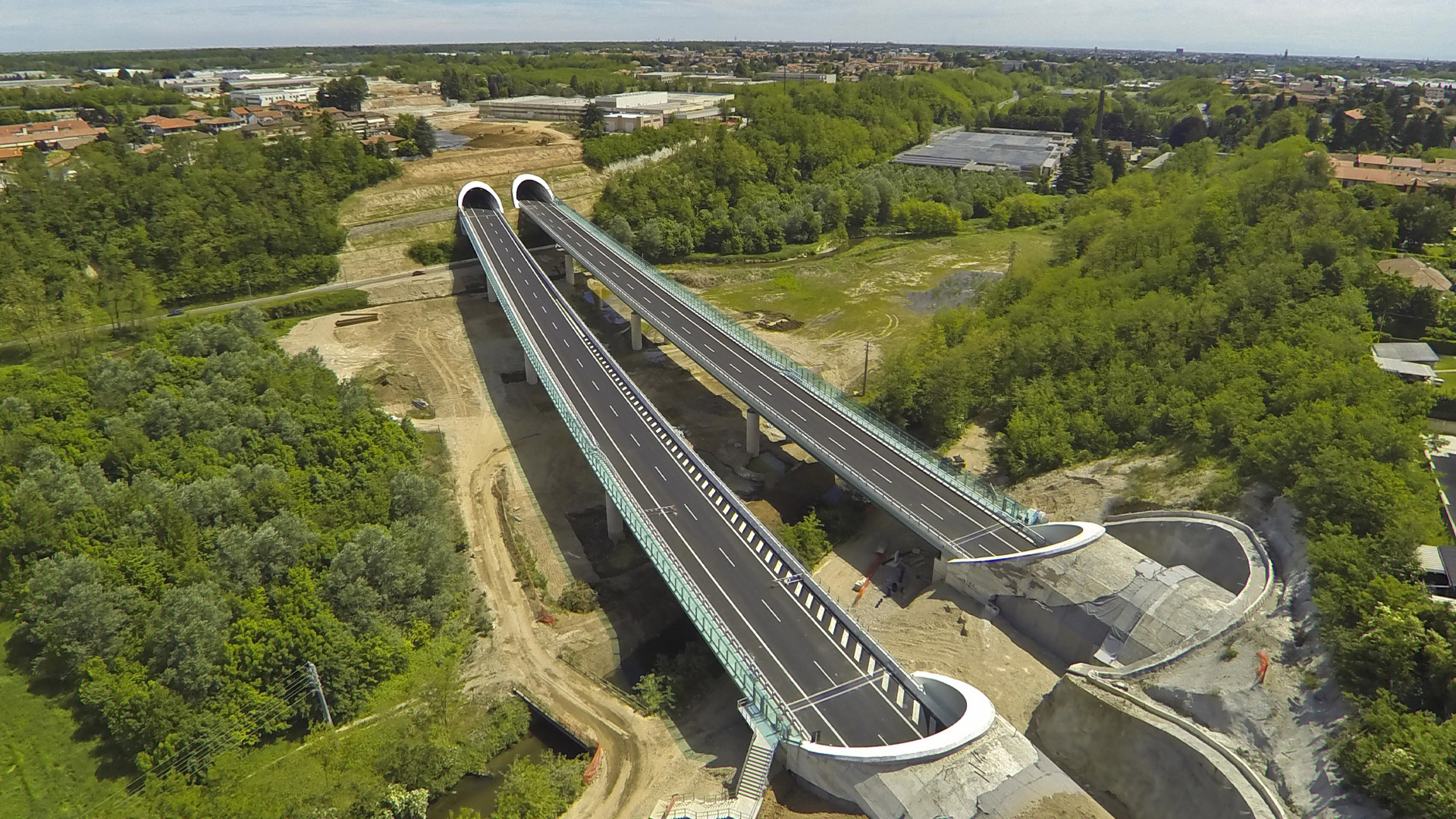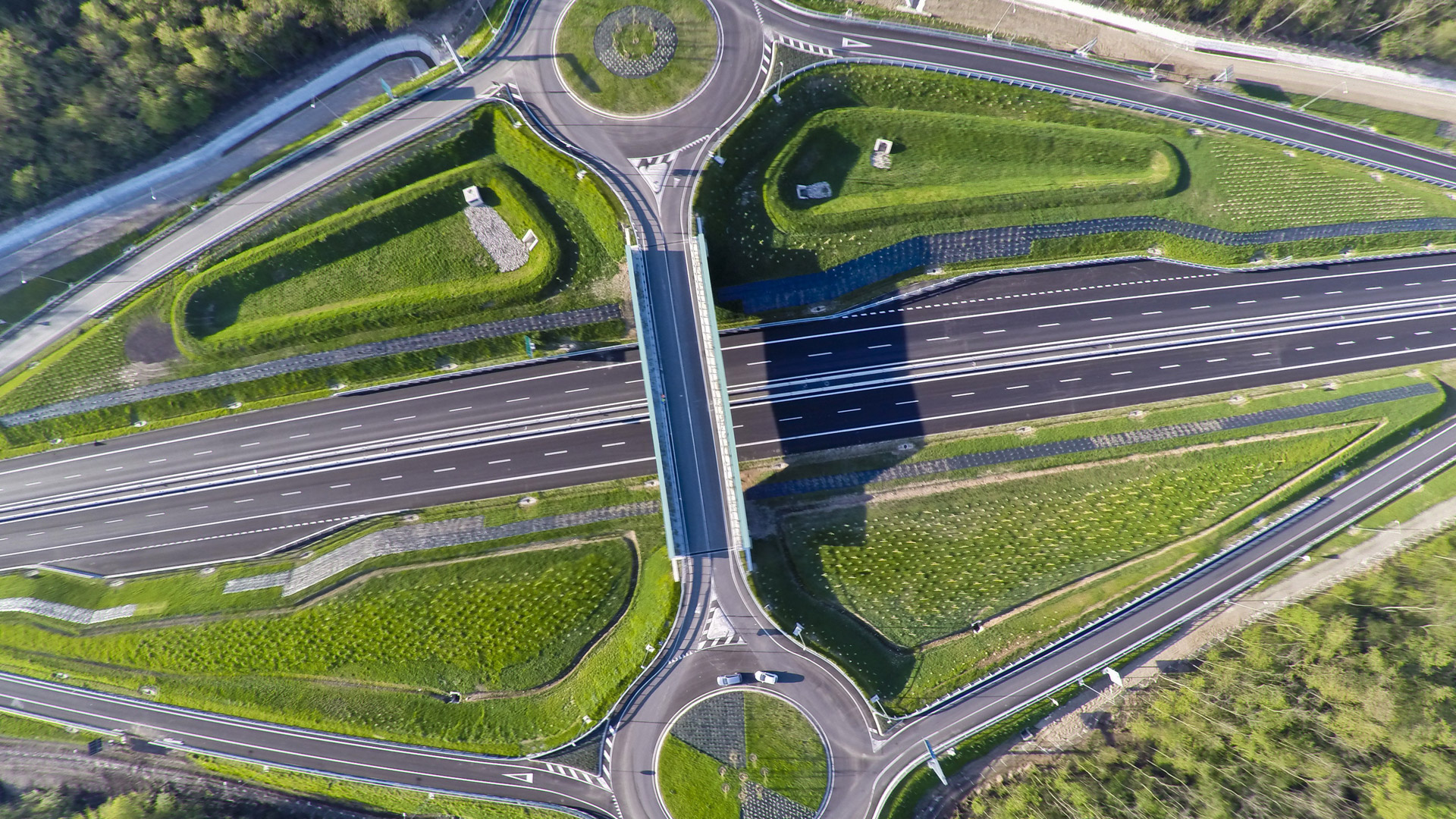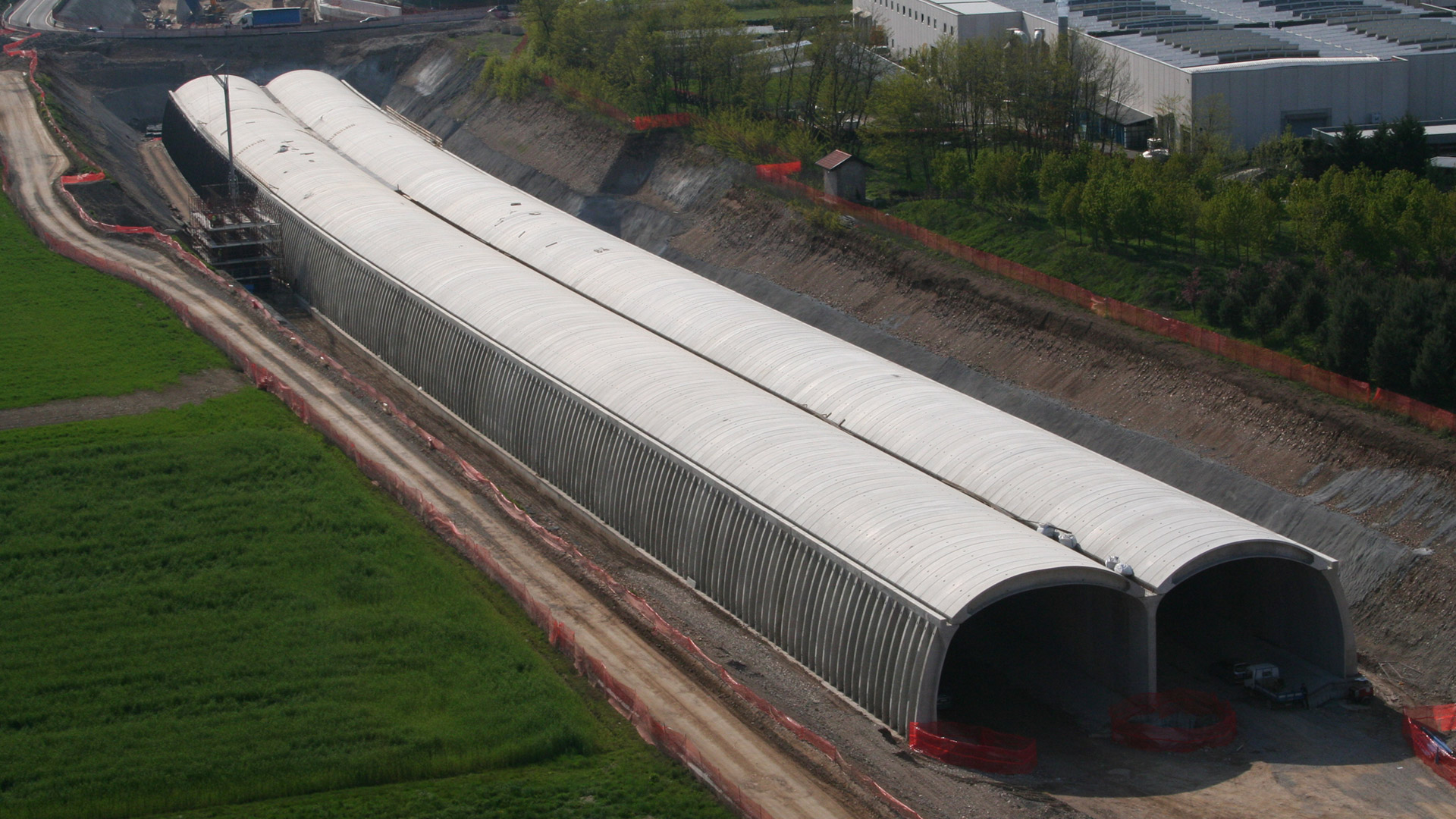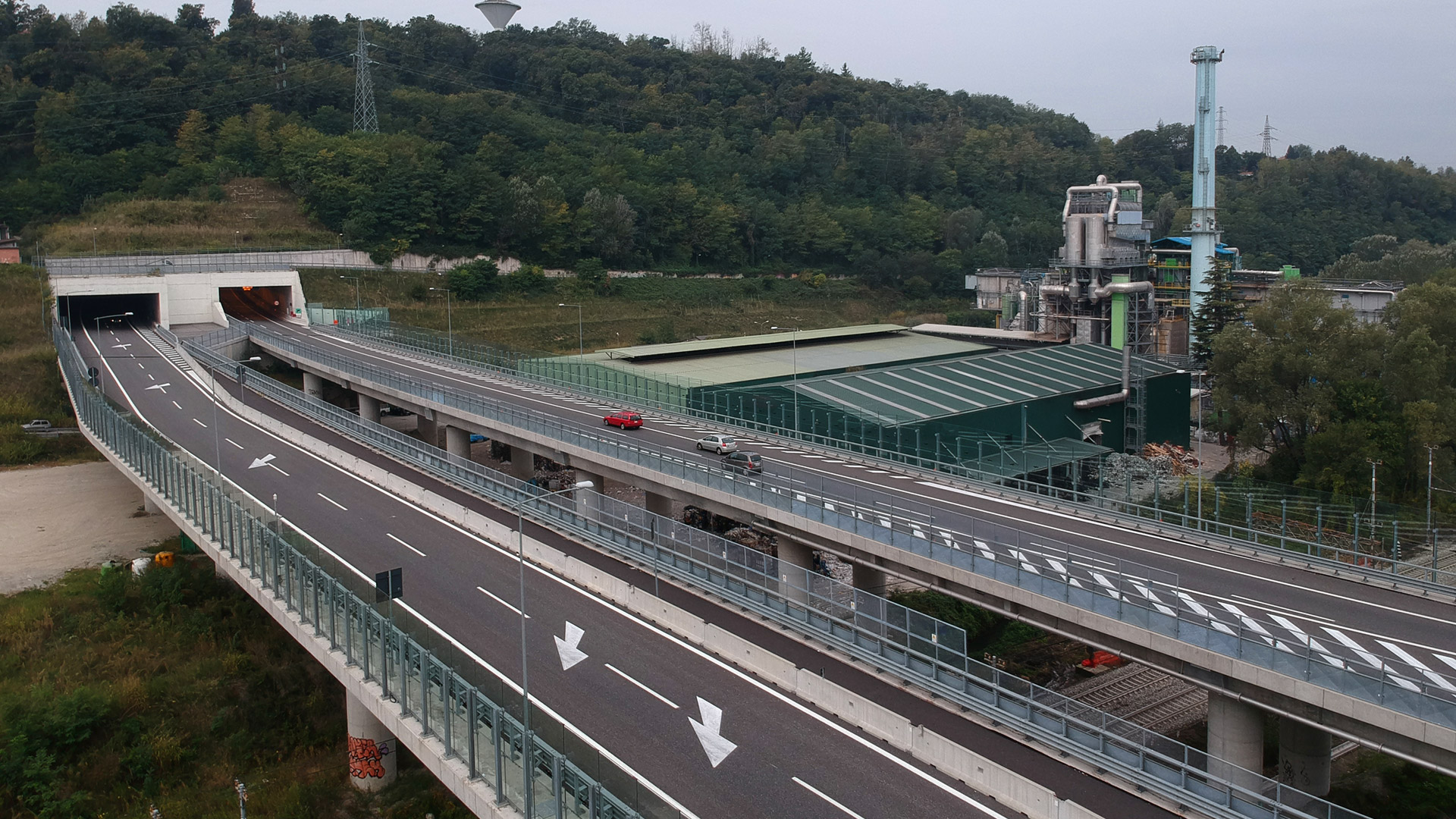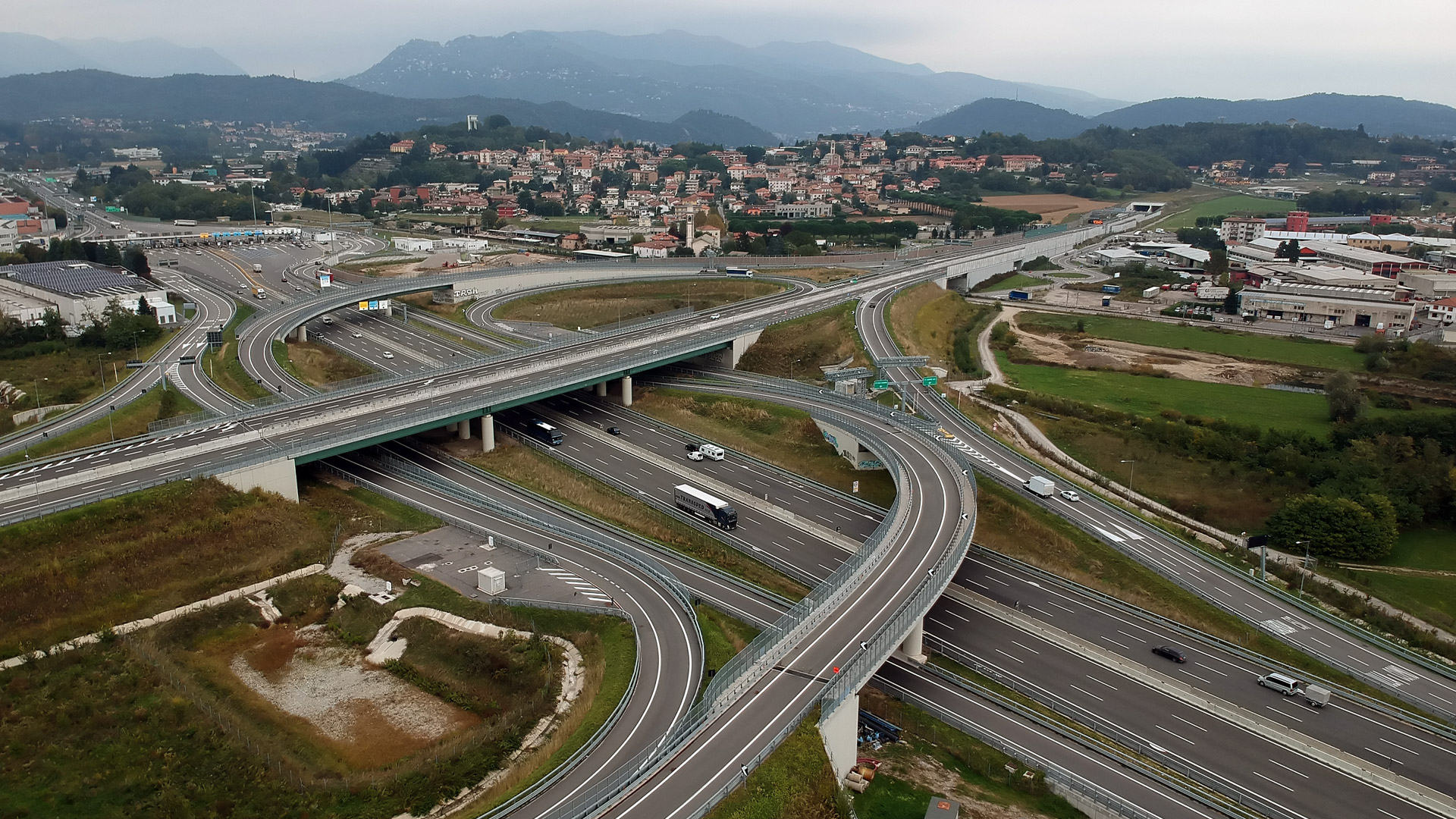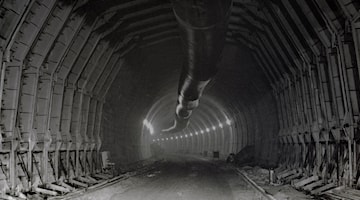Pedemontana Lombardia Highway
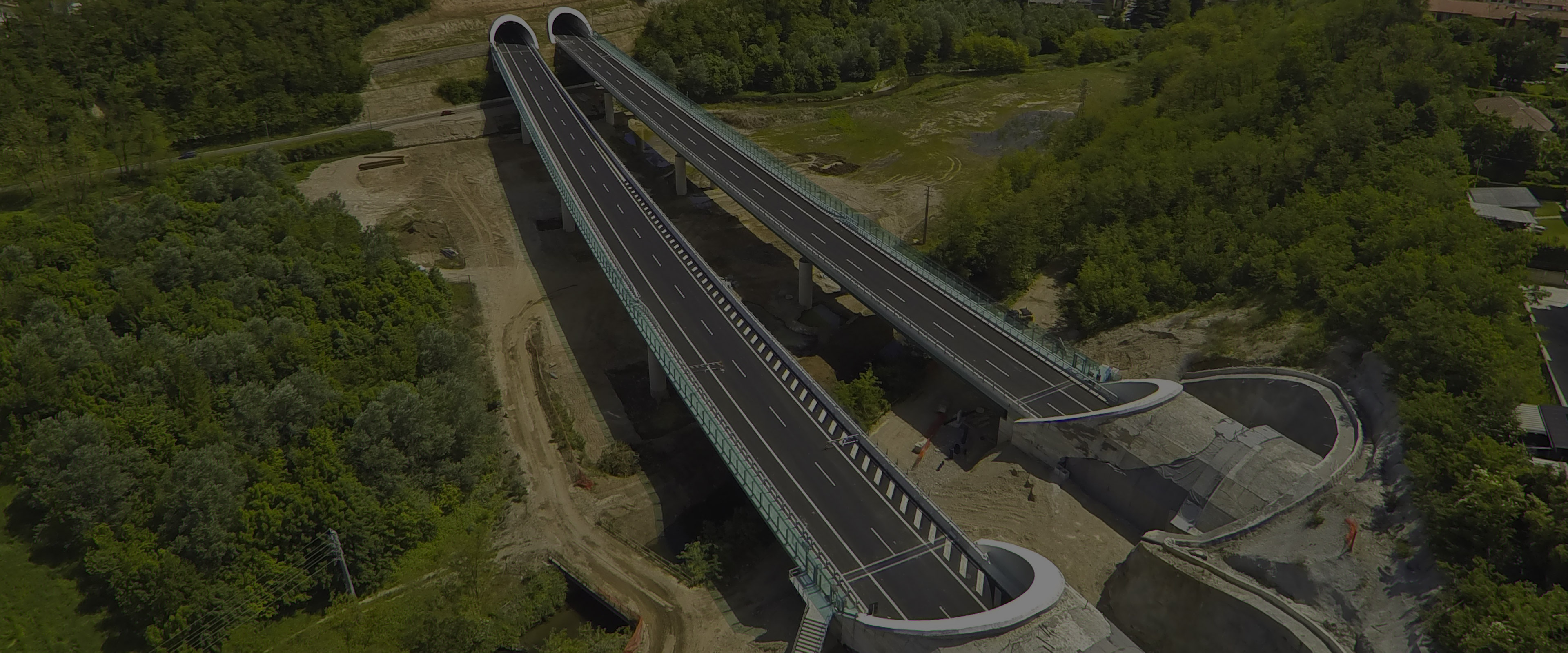
PEDEMONTANA LOMBARDA HIGHWAY, ITALY
For the Pedemontana Lombarda project, a strategic work that combines functionality and technological innovation, the works operated by Rebuild between 2010 and 2017 included the final and executive design, as well as the construction of approximately 47 km of motorway and secondary roads. The project also includes the construction of natural and artificial tunnels, bridges, and viaducts, which together outline a complex and advanced transportation network.
More specifically, the works were carried on starting from the A Section (A36), which extends for over 14 km from the connection with the A8 Milano-Varese motorway in Cassano Magnago to Lomazzo, just before the connection with the A9 Milano-Como motorway. This section consists of two separate carriageways, each with two lanes flanked by a shoulder, allowing travel at a speed of 140 km/h. Among the main works in this project, the Cassano Magnago interchange, a "semi-cloverleaf" with six ramps, the Solbiate Olona Artificial Tunnel and the Solbiate Olona Natural Tunnel, the Olona Viaduct, the Gorla Artificial Tunnel, and the Cislago Artificial Tunnel stand out.
The other works carried out were the two sections of the Varese (A60) and Como (A59) ring roads, which represent important segments of the road network. The Varese ring road section extends for about 5 km and includes major works such as the Morazzone Natural Tunnel, the Lozza Artificial Tunnel, and the Vedano Viaduct. The Como ring road section extends for about 3 km and includes works such as the Grandate interchange, the Grandate Artificial Tunnel, and the Acquanegra Viaduct, as well as two connections with the existing road network.
The construction of those infrastructures required the expertise of approximately 6,500 professionals, including engineers, architects, surveyors, accountants, industrial experts, carpenters, miners, and workers. Indeed, the Pedemontana is at the forefront of plant engineering, monitoring, and tunnel safety. Along the entire route, there are AID (automatic incident detection) cameras, variable message signs, and a hydraulic monitoring system. In the tunnels, there are driveable and pedestrian bypasses made visible by green light portals, with a luminous profile indicating the nearest escape route in case of necessity. Safety features include arrow-cross panels, ventilation systems and sensors, and radio coverage, all controlled remotely from the control center at the Como-Grandate toll barrier, which uses SCADA and SINCORNET software to monitor and control all equipment.
Additionally, the project stands out for introducing the free-flow tolling system, a highly automated system that replaces traditional methods with portals located along the routes, capable of detecting and classifying vehicles in transit without the need to stop or slow down.
One of the main challenges was the underpass of the Solbiate Olona town center through a large-diameter natural tunnel excavated using traditional methods, characterized by very modest coverings and the presence of residential buildings, for which continuous topographic monitoring was conducted, revealing no significant settlements.
The Pedemontana project has received several accolades, including a presentation at the S.I.G. Congress at Expo Tunnel in Bologna and a publication in the magazine "Gallerie" regarding the application of "jet grouting" technology in the Solbiate Olona Natural Tunnel.

THE WORK AND THE TECHNIQUE
MILLION M3 EMBANKMENTS
MILLION M1 CONCRETE
MILLION M3 OF EXCAVATIONS
TONS OF CONCRETE STEEL
TONS OF STEEL FOR DECKS
KM OF LARGE DIAMETER PILES
KM CABLES FOR EQUIPMENT
Autostrada Pedemontana Lombarda S.p.A.





